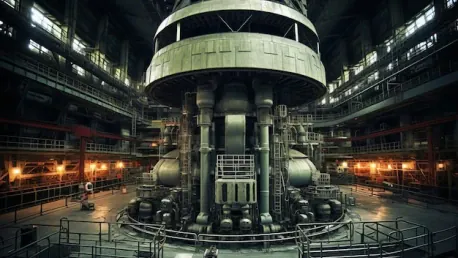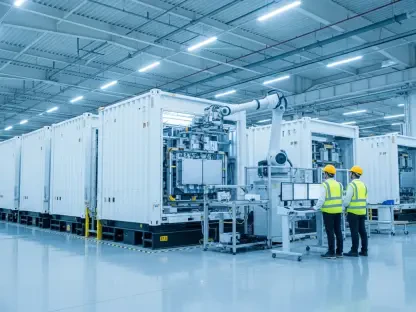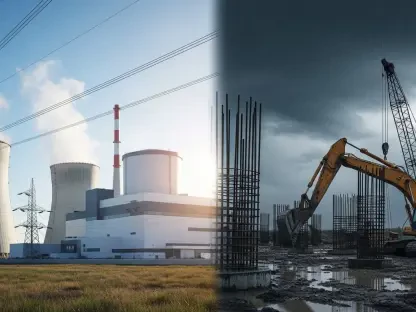Recent developments within the nuclear technology and clean energy sectors have highlighted significant efforts to enhance energy production, address environmental concerns, and overcome various challenges faced by the industry. From large-scale refurbishments of nuclear reactors to advanced lithium production technologies, these initiatives reflect the transformative potential of emerging innovations.
Bruce Power Nuclear Refurbishment
Bruce Power, the world’s largest operational nuclear facility, has received approval from Ontario’s Independent Electricity System Operator (IESO) to commence its fourth Major Component Replacement (MCR) project on Unit 5, beginning in 2026. This significant milestone was achieved after thoroughly verifying that Bruce Power had met all necessary terms and conditions required for the refurbishment. The overhaul includes the replacement of critical components such as steam generators, pressure tubes, calandria tubes, and feeder tubes, ultimately extending the reactor’s lifespan by 35 years.
Following the completion of Unit 6, Units 3, 4, 5, 7, and 8 will undergo similar refurbishments, all of which are scheduled for completion by 2033. The ambitious project aims to secure a reliable and affordable electricity supply for Ontario, while additionally ensuring a stable provision of cancer-fighting medical isotopes. The Bruce Power refurbishment project supports the local economy by generating approximately $10 billion annually and sustaining around 22,000 jobs across the province. Through these endeavors, Ontario has positioned itself as a global leader in nuclear power plant refurbishment, reinforcing the long-term reliability, affordability, and sustainability of its electricity system.
Trump’s Revival of the Coal Industry
In an effort to revive the coal industry in the United States, former President Donald Trump signed four executive orders designed to stimulate coal production and usage. These orders classified coal as a “critical” mineral, aimed at preventing the shutdown of some coal-fired power plants, and streamlined the process of leasing coal on federal lands. Despite the steady decline in coal’s contribution to the U.S. electricity grid—from 51% in 2001 to roughly 15% today—Trump emphasized the importance of coal in meeting the increasing electricity demand driven by data centers and artificial intelligence.
However, this approach sparked significant criticism. Environmentalists and energy experts argue that coal is outdated, environmentally harmful, and economically uncompetitive when compared to more affordable and sustainable energy sources like natural gas, wind, and solar. While Trump’s executive orders may temporarily delay the closure of certain coal plants, experts agree that they are unlikely to reverse the overall decline of coal in the long term. Clean and renewable energy sources continue to outpace coal due to their growing cost-effectiveness and environmental benefits.
Lithium Production in Texas
GeoFrame Energy, a pioneering Texas-based company, is embarking on the first large-scale domestic lithium production project in the United States. Utilizing the advanced Ekosolve Direct Lithium Extraction (DLE) technology, the initiative aims to harness deep oil-field brines in the Smackover Formation, East Texas. These brines are known to contain high concentrations of lithium, making them a strategic asset for achieving American energy independence.
GeoFrame projects an impressive output of up to 83,500 metric tons of battery-grade lithium carbonate annually by 2029, which would be sufficient to meet the entire current U.S. demand. The project boasts a high lithium recovery rate of 92-95%, minimal water use, low-impact chemicals, and low energy consumption. With construction of the Phase 1 plant slated to start early next year, the plant is expected to produce 3,000 metric tons annually using geothermal energy. The initiative is of particular importance as it addresses vulnerabilities in U.S. supply chains caused by China’s current dominance in global lithium processing capacity. As demand for lithium continues to grow, driven by the proliferation of electric vehicles and renewable energy storage, this project positions the U.S. to achieve a renewable and sustainable supply of this critical resource.
Innovative Nuclear Reactor in France
French startup NAAREA is making strides in nuclear technology with the development of their XAMR®, a molten salt microreactor designed to generate 40 megawatts of electricity and 80 megawatts of heat using spent nuclear fuel. NAAREA’s approach, aimed at reducing radioactive waste, decentralizing power generation, and lowering carbon emissions, is pioneering in the field. The compact reactors, founded on the concept of mass production, are intended for local deployment in locations such as factories, data centers, and remote communities.
NAAREA stands as the first French company aligned with the France 2030 plan for “Innovative Nuclear Reactors.” Operating at lower pressures with built-in safety advantages, these reactors utilize liquid salt. Collaborations with esteemed institutions such as CNRS and Paris-Saclay University are focused on optimizing fuel salt chemistry and recycling processes. Significant investments, along with international collaborations and active participation in regulatory discussions, demonstrate NAAREA’s commitment to achieving clean energy through the recycling of nuclear waste. The venture holds immense potential for sustainable energy production while addressing the pressing challenge of radioactive waste management.
Diamond-Based Radiation Detector in Japan
Orbray, a Tokyo-based precision components manufacturer, has unveiled an innovative diamond-based nuclear radiation detector. This groundbreaking technology leverages a high-quality, large-diameter single-crystal diamond substrate characterized by superior radiation hardness, thermal and chemical stability, rapid signal response, and reliable operation in high-radiation environments. The detector’s material properties make it remarkably similar to human biological tissue in terms of radiation absorption, allowing for high-precision measurements across various radiation types.
Initial evaluations have demonstrated the detector’s ability to deliver accurate and rapid dosimetry and imaging in clinical X-ray systems. Orbray plans to showcase this technology at the upcoming Japan Radiology Congress, highlighting its potential applications in radiation medicine, nuclear physics, and high-energy research. This advancement promises significant contributions to the field of radiation detection, offering unprecedented precision and reliability for diverse applications.
Wind-Assisted Propulsion System in Shipping
A Spain-based company, Bound4blue, has achieved a significant milestone with the successful installation of four 26-meter high eSAIL units on the MV Atlantic Orchard juice carrier. This marks the world’s tallest suction wings on a vessel. The wind-assisted propulsion system (WAPS) employed by Bound4blue utilizes autonomous control to significantly reduce fuel consumption and greenhouse gas emissions, with projected savings around 10%. The MV Atlantic Orchard, chartered by Louis Dreyfus Company (LDC), underwent retrofitting at the Astander Shipyard in Santander, Spain.
The technology enables more eco-friendly operations for both new and existing vessels, enhancing the maritime industry’s adherence to stringent environmental regulations. With bound4blue’s increasing installations and partnerships with shipping decarbonization teams, this innovative solution represents a promising step towards more sustainable and greener maritime practices.
Portable Nuclear Radiation Detector
The University of the West of Scotland has developed a groundbreaking portable nuclear radiation detector module, LaBr3 (Ce), especially for nuclear experiments at esteemed laboratories like CERN. The device plays a critical role in advancing clean energy research, environmental monitoring, and medical applications. From measuring elemental abundances and testing fundamental symmetries in physics to enhancing nuclear workforce training, the LaBr3 (Ce) module serves multiple critical functions.
Led by Dr. S Nara Singh Bondili, this development aims to address the need for improved radiation detection, portability, and adaptability. Funded by renowned organizations including the Science and Technology Facilities Council UK Nuclear Data Network, the project underscores the University of the West of Scotland’s distinguished reputation in the domain of nuclear physics. It highlights the institution’s commitment to groundbreaking research and education in nuclear technology.
RTGs in Space Exploration
Radioisotope thermoelectric generators (RTGs) have been pivotal in powering a multitude of iconic space missions, including the Apollo Moon landings, the Voyager probes, and the Perseverance rover on Mars. RTGs generate electricity by converting heat from the radioactive decay of materials such as plutonium-238 (Pu-238). They are particularly suited for missions venturing beyond Jupiter, where the efficiency of solar power begins to wane.
The reliability and longevity of RTGs have been showcased through their use in long-term data transmission from the Voyager program and other deep-space missions. Despite the controversies and safety concerns associated with the use of radioactive materials, RTGs continue to be indispensable. They ensure an uninterrupted power supply under the harsh conditions of space, thus playing a crucial role in the success of deep space exploration endeavors.
Return of Nuclear Waste to Germany
Recent advancements in nuclear technology and clean energy sectors have highlighted considerable efforts dedicated to boosting energy production, lowering environmental impact, and addressing other challenges the industry faces. Companies and researchers are investing heavily in upgrading nuclear reactors, making them safer and more efficient, while ensuring a reliable power supply. Moreover, innovations in lithium production processes are paving the way for more effective batteries, which play a crucial role in the storage and sustainability of clean energy sources.
These large-scale refurbishments and technological advances are not just about improving existing systems but also about paving the way for the future. The aim is to create a cleaner, more sustainable world by leveraging cutting-edge technologies. This initiative reveals the transformative potential of emerging innovations that could redefine how we produce and consume energy.
In addition, integrating advanced AI and machine learning into energy networks helps optimize power distribution, preventing waste and enhancing grid stability. These technologies work together to manage and predict energy consumption patterns, making the entire system more responsive and efficient. The proactive approach to addressing global energy needs and environmental concerns is setting the stage for a greener future, showcasing how nuclear technology and clean energy innovations are making strides towards a sustainable and impactful transformation.









